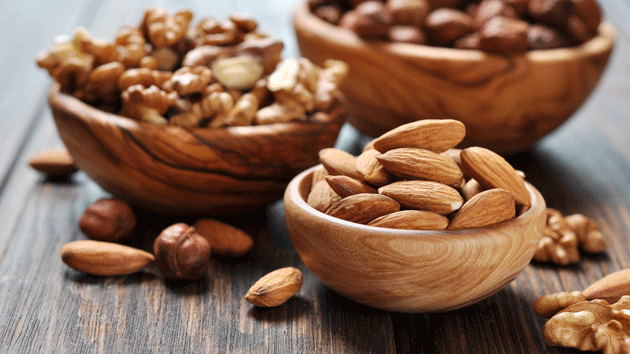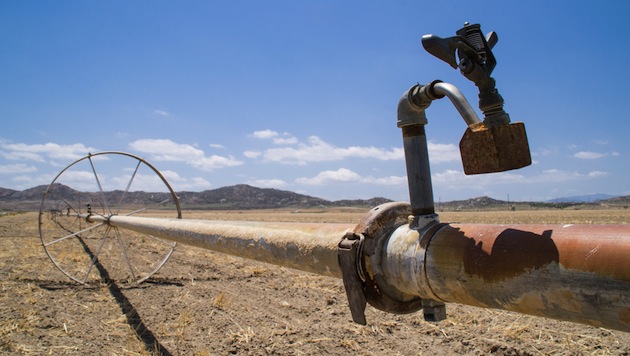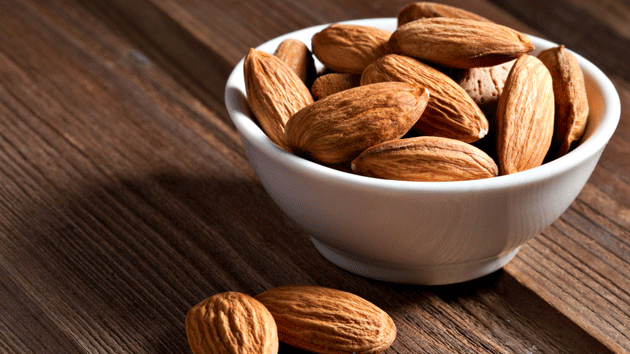
<a href="http://www.shutterstock.com/pic-142886560/stock-photo-almonds-walnuts-and-hazelnuts-in-wooden-bowls-on-wooden-background.html?src=X97wO8FlgsCO9q7GM0CTEA-1-1" target="_blank">mamma_mia</a>/Shutterstock
California has entered the age of King Nut: The state produces more than 80 percent of the world’s almonds, and roughly 30 and 40 percent of the world’s pistachios and walnuts, respectively. Most of the production takes place in the Central Valley, a swath of farmland in California’s midsection.
A single almond requires a gallon of water to grow—bad news in the midst of California’s worst drought in half a millennium. But with ever-rising demand in a nut-crazed world, farmers continue to expand orchards, pumping water out of the ground to make up for the dried-up surface water. These charts tell the story:

As my colleague Tom Philpott recently reported, Since 2011, central California has lost “more water than all 38 million Californians use for domestic and municipal supplies annually—over half of which is due to groundwater pumping in the Central Valley.”
Groundwater is the stuff of centuries: rain percolating for ages through pores of soil and rock, coming to rest in aquifers. In wet seasons, water generally begins its slow trickle-down journey to replenish the aquifers (the small upward spikes in the third chart above). But as Jay Famiglietti, the NASA water scientist who gathered the groundwater data, has stated, “The downs are way bigger than the ups, which means that groundwater levels are on a one-way journey to the very bottom of the Central Valley.”






